By Emma Park
Over a hundred makers from around the world exhibited at this year’s Ceramic Art London. The fair was held in Kensington Olympia West, a huge warehouse divided into white-walled display booths and a large open space for talks. Makers at CAL exhibit not with galleries but at their own individual stalls, enabling viewers to explore their oeuvre in depth.
There was a wide range of techniques and materials on display. While the work was of a high technical standard, the types of objects made varied from functional objects like mugs, plates and lighting, through decorative vases and vase-like display objects to representations of the human form, particularly the face, and pure abstract sculpture.
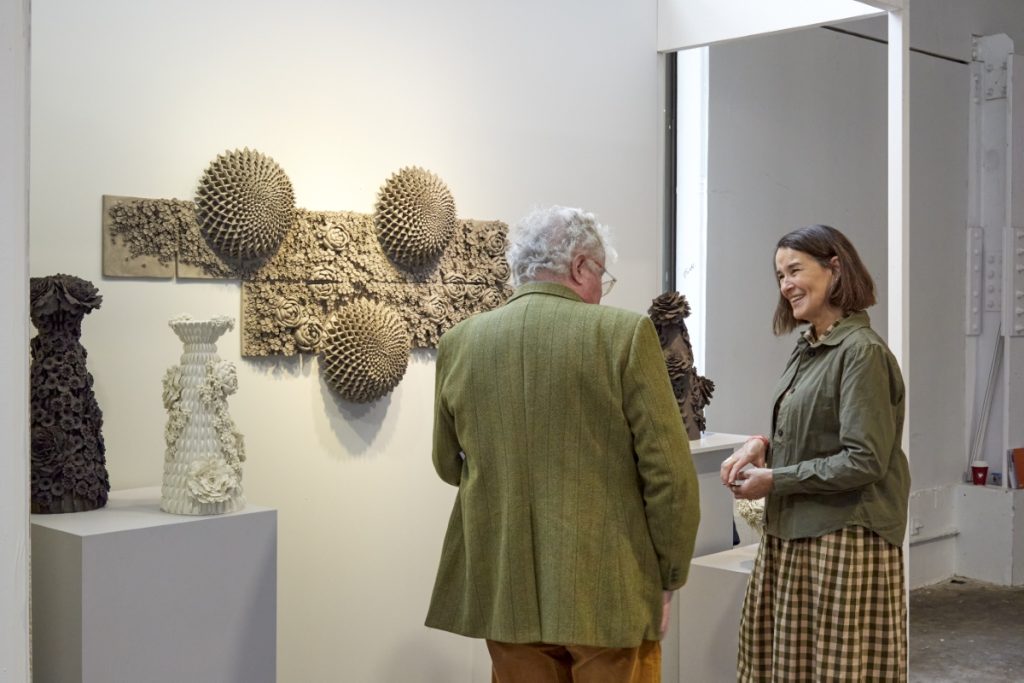
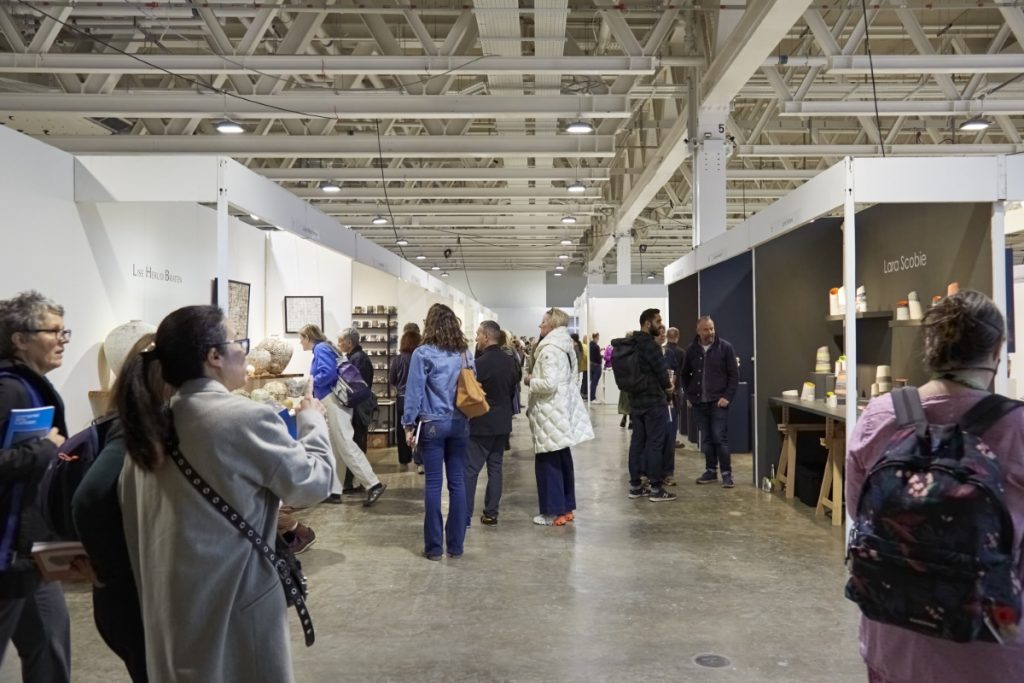
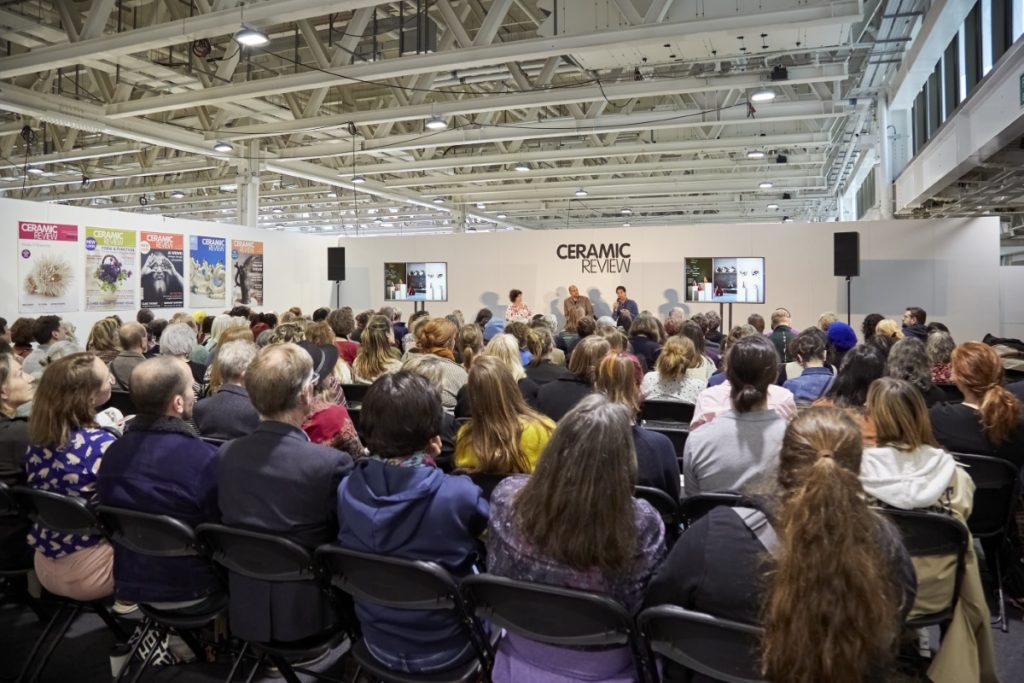
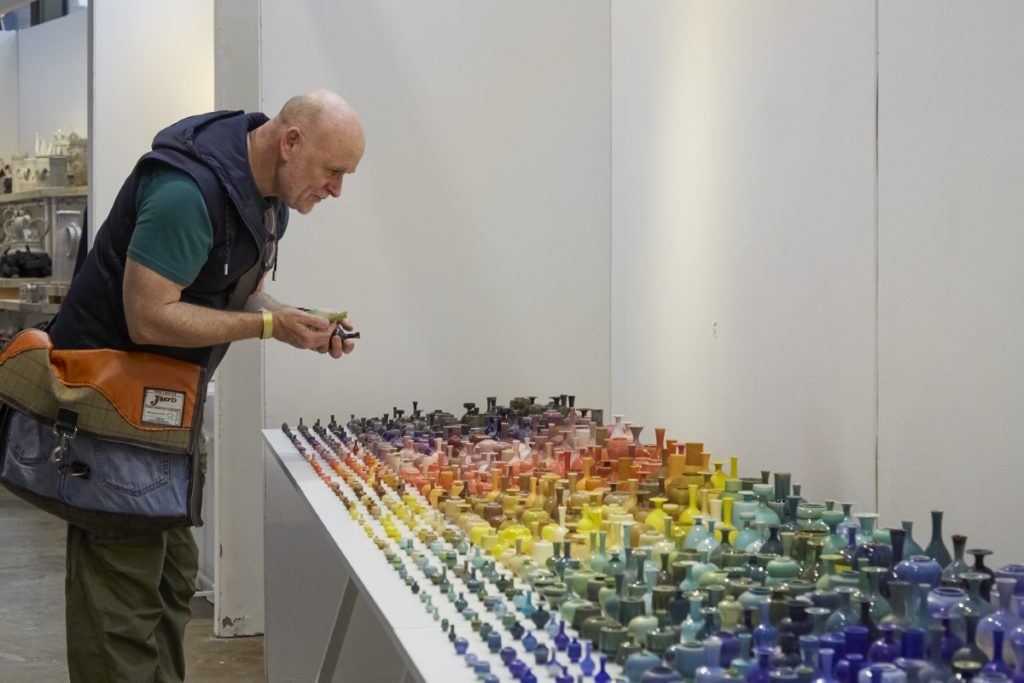
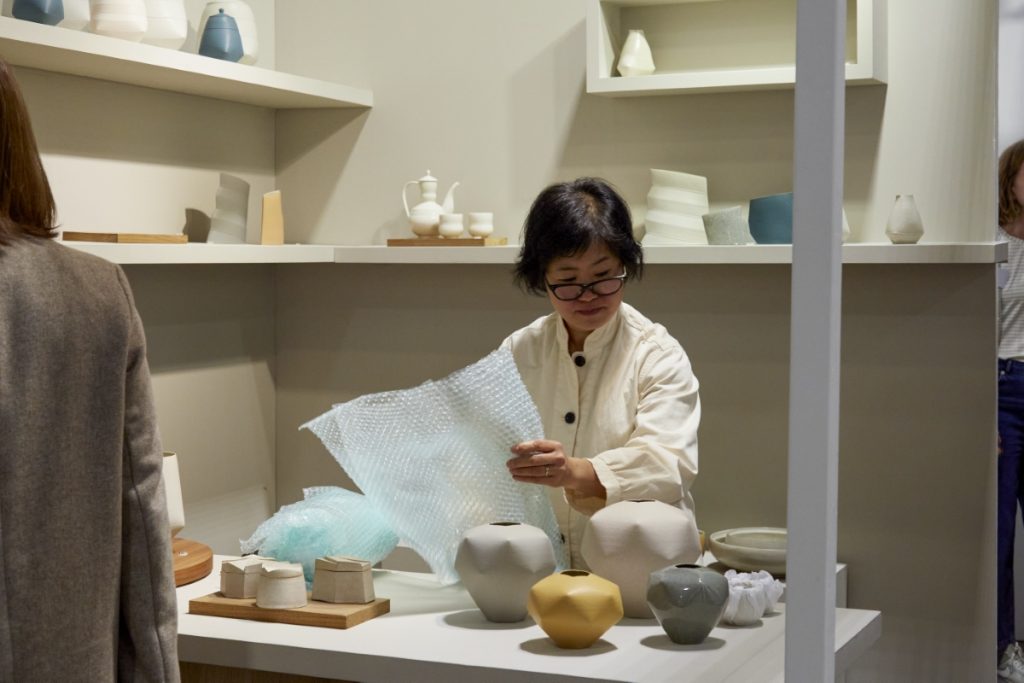
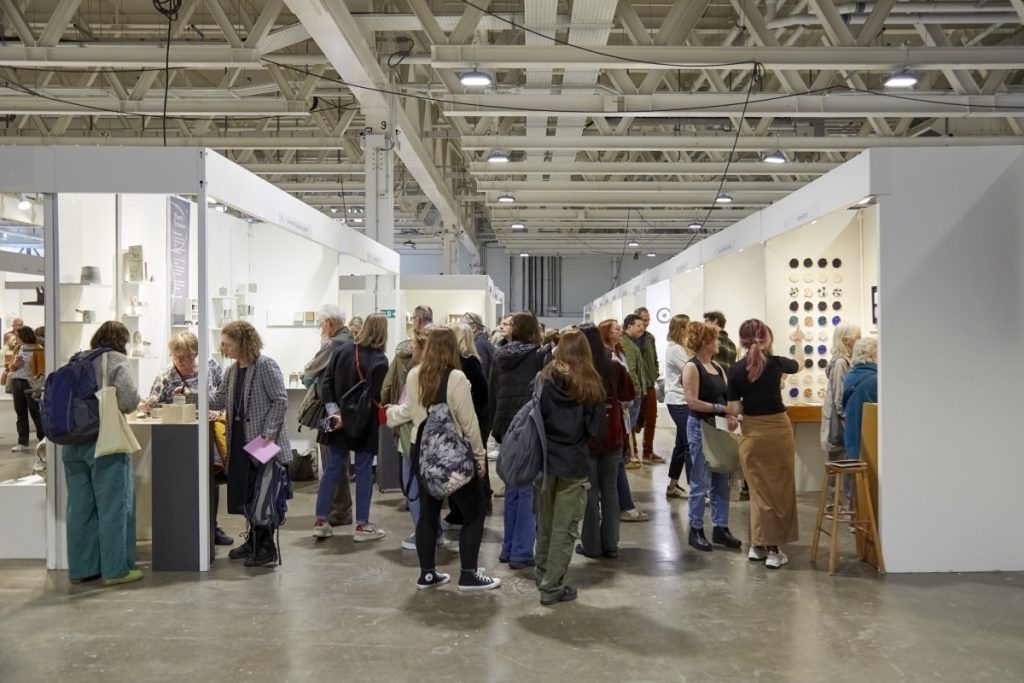
One recurrent theme was the small-scale vessel. Especially impressive was the work of the Japanese ceramist Yuta Segawa, whose exhibition table was covered with hundreds of tiny, perfectly finished vases, ranging from the cup-size to the doll’s-house miniature. Each vase had a unique form and was glazed in a different shade, the whole display ranging from off-whites via greens, yellows, oranges, purples and blacks. The aim in making everything so small, Segawa told me, is to ‘challenge technique’, because it is difficult to do. A second range of his pots were also displayed with hand-applied decorations by his partner, Miyu Kurihara, whose background is in textiles. Her blue-and-white or colourful and gilded designs of birds, fish, plants and animals draw inspiration from traditional Chinese and Japanese pottery, as well as from Greek motifs and textile patterns.
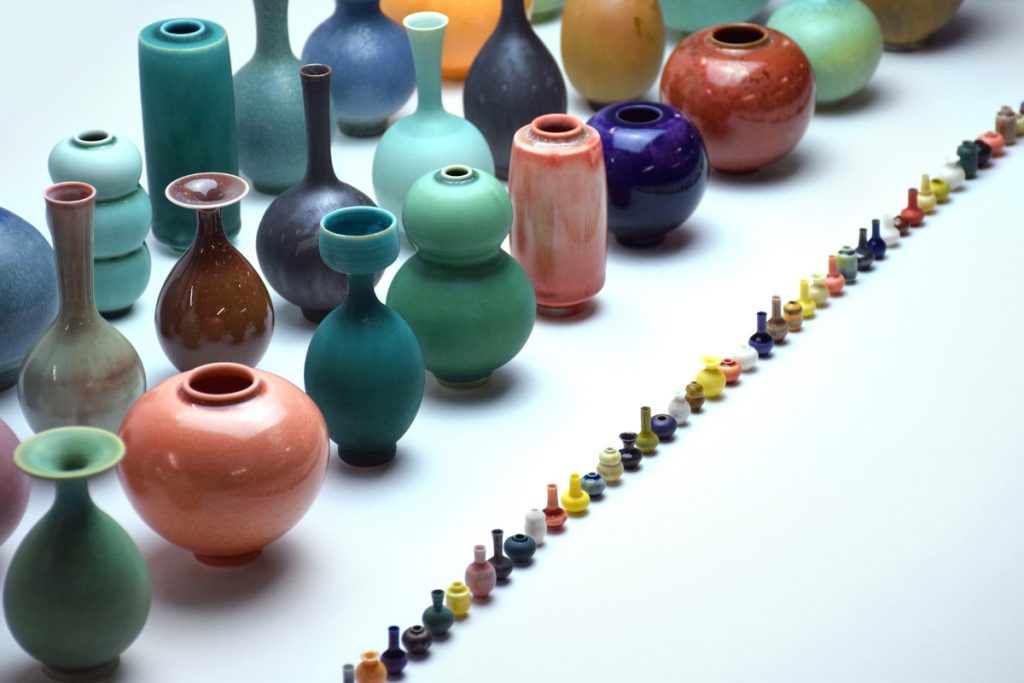
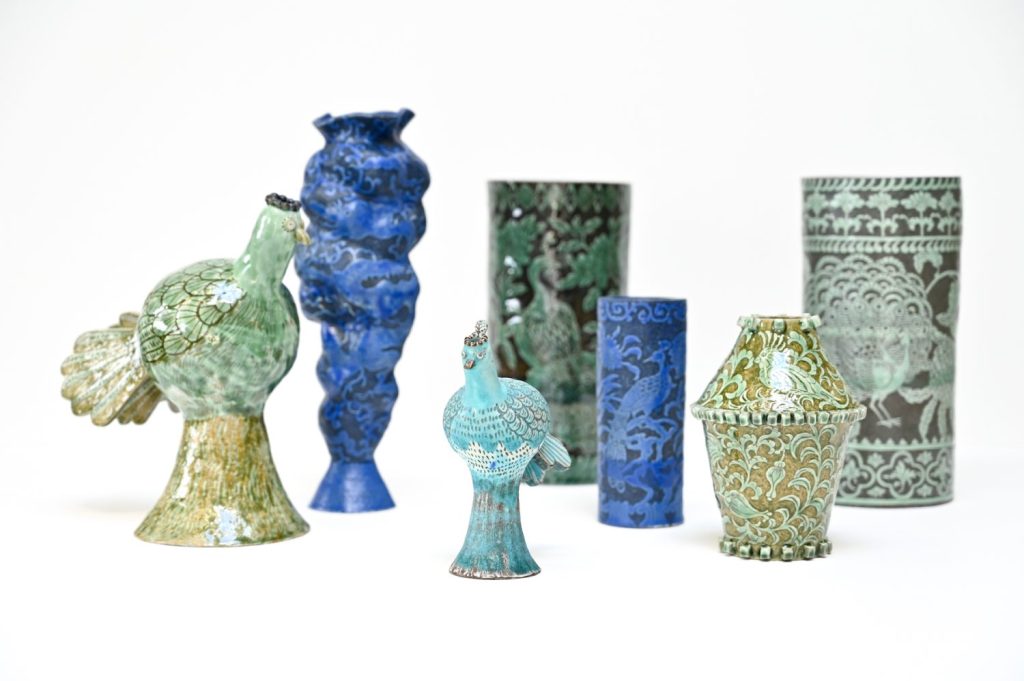
In ceramics, there is always a balance to be struck, which will be different for each potter, between the complexity of the form and of the pattern or decoration imposed on the surface. Someone who explores this relationship in a particularly intriguing way is Jin Eui Kim, a South Korean ceramicist who finished a PhD at Cardiff in 2012 and whose highly collectible work is represented by galleries in London, Paris and elsewhere. His doctorate explored reductive processes in clay and what happens when parts are removed from the surface of a sculpture. As he experimented with this, he found that the surface started to play tricks with his eyes, appearing to be almost inside-out.
Kim’s subsequent work, he told me, explores how to ‘manipulate the perception of three-dimensional form’ through the use of graduated tonal bands or blocks. These make the surface of the object appear ‘ambiguous’ so that it is difficult to tell whether the underlying structure is straight, curved or convex, rigid or smooth, illusion or reality. Through blurring and shading, Kim also plays with the ‘figure-ground effect’, where the eye of the viewer is uncertain which areas of the object are to be interpreted as the background, and which as the figures imposed on top of it. His pots, which adopt simple but harmonious shapes – bowls, vases with covered mouths, cylinders – are decorated with layers of coloured stripes carefully painted in rings of alternating light and dark shades, or made out of interlocking sections cut out and inserted like a jigsaw puzzle. He now hopes to obtain funding to spend two years exploring perspective and gradation further.
Even apparently simple shapes can pose technical challenges. Among the objects exhibited by Peter Beard, who is based in Leamington Spa in the Midlands, was an abstract sculpture made of two hoops, one balanced inside the other. He had to fire them separately, glue them together afterwards, and insert a metal rod to hold the structure in place. Some of his objects take the shape of discs, hollow circles, flattened spheres or ovoids, while others are rounded and sometimes gently ribbed, resembling gourds. ‘I like forms to have a completeness,’ he said. The deep blue, green, pale brown or shell-white patterns and textures with which they are covered give them a very organic character, as though they had come from the bottom of the sea.
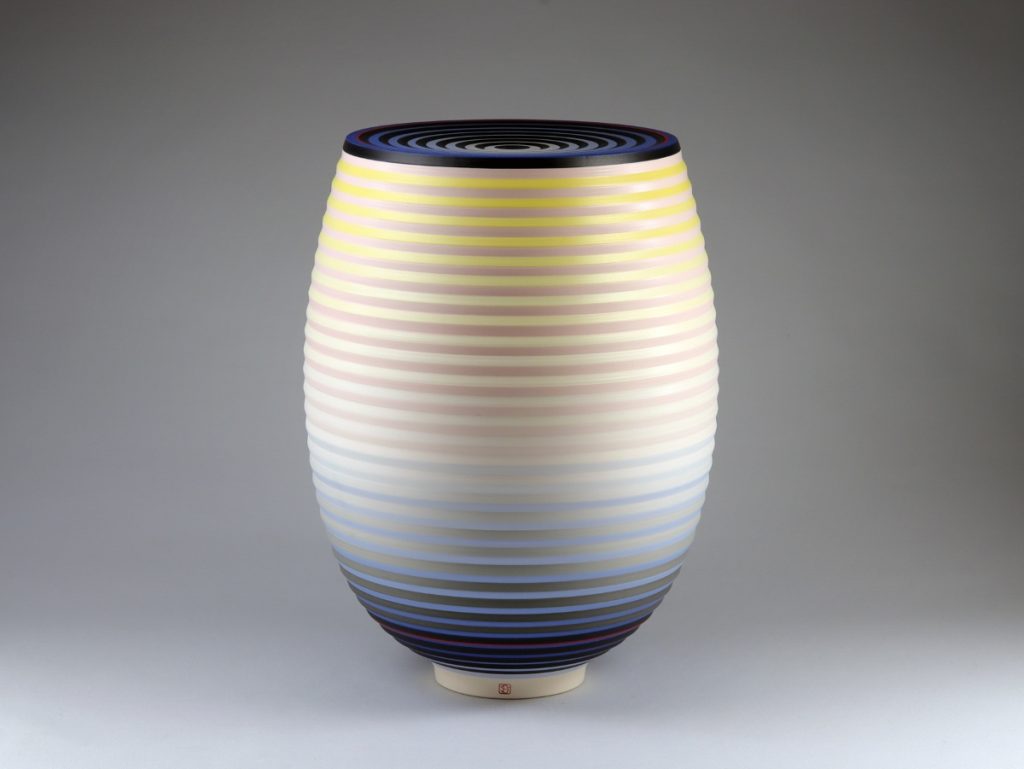
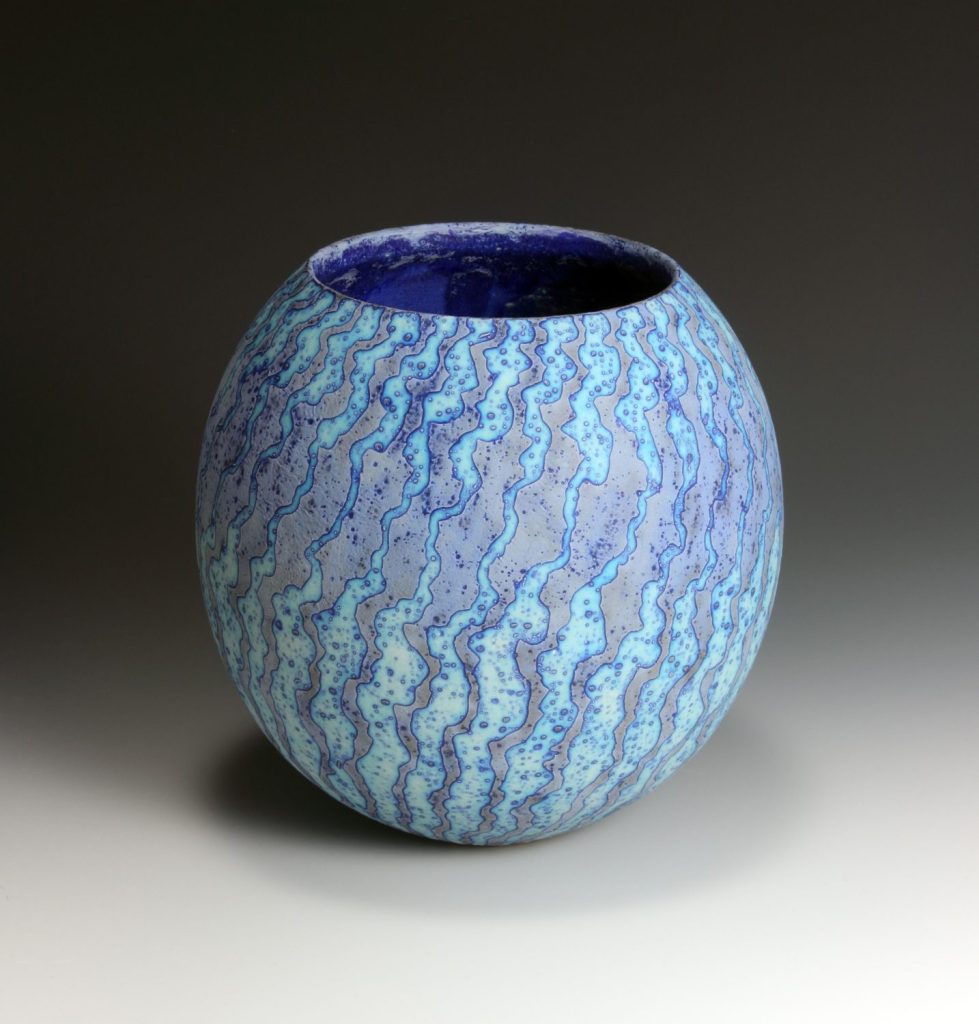
To create a rippling pattern with contrasting glazes, Beard uses a wax resist technique, in which he applies one layer of glaze and then paints over patterns with a water-based wax. When the wax is dry, he brushes on another layer of glaze, which only sticks where the wax is absent. In the kiln, the wax burns away and the two layers of glaze chemically react with each other. The resulting colour and texture depend on the thickness and chemical composition of the two glazes. Inside some of the open-topped vessels, he applies a dark blue glaze that melts at a lower temperature, and tends to sink towards the bottom to create a ‘glassy dark blue interior’, like a ‘big deep sea’. To create the thick, mottled texture found on some of his vessels, Beard builds it up over several months out of thin layers of differently coloured clays. After the texture is about a centimetre thick, he applies a white glaze in two firings. ‘When it comes from the kiln, it’s a lumpy, bumpy white thing,’ he says. He then grinds into the surface with a diamond disc to reveal the patterns, colours and structures that he has built up, until it has the look of ‘polished marble’ – or perhaps bleached coral.
At the conceptual end of the spectrum were the sculptures of East Sussex-based Timothy Fluck. These are tabletop-sized, brightly coloured assemblages of interconnected, geometrically articulated pipes, funnels and mottled spheres, whose futuristic but also surrealist aesthetic might suggest something out of Yves Tanguy or the fantasies of JG Ballard’s Vermilion Sands. A more immediate inspiration, Fluck told me, is Brutalist architecture. Reflecting on the origins of this style of architecture led him to explore the experience and ‘psychology of space’, and the idea of utopia as ‘the promise of something rather than the endpoint’. The latter idea is reflected in the Möbius-like ‘continuous loops’ found in his sculptures, which strive to reach a finishing point but end up turning back on themselves.
Fluck’s preferred material is a a self-glazing Parian porcelain, which has a ‘nice soft sheen’, and gives a white that can be easily coloured or otherwise left as it is, perhaps evoking the ultra-sterility of utopian materials. One of his sculptures, Elastic Futures (2023), was used as a cover picture for the fair catalogue: it incorporates sections in porcelain and a glowing pink tube lit internally with neon. The sculpture illuminates itself, repeating the theme of the endless return. At the same time, the use of neon evokes the experience of being in the city, in particular ‘the streets at night’. Some of Fluck’s more experimental pieces also incorporate three-dimensionally printed resin, which is glued to the porcelain. He is now planning to experiment with bone china, which, unlike Parian, gives a ‘brilliant white finish’.
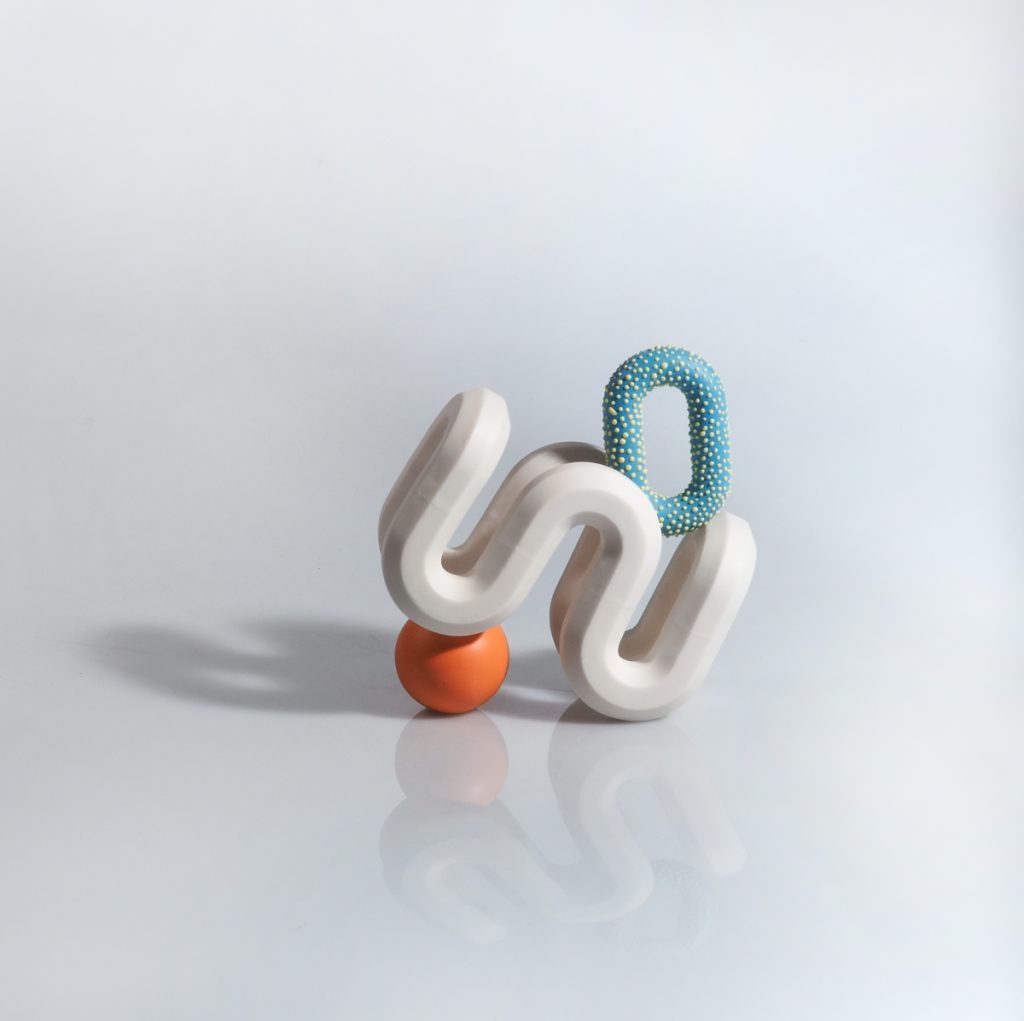
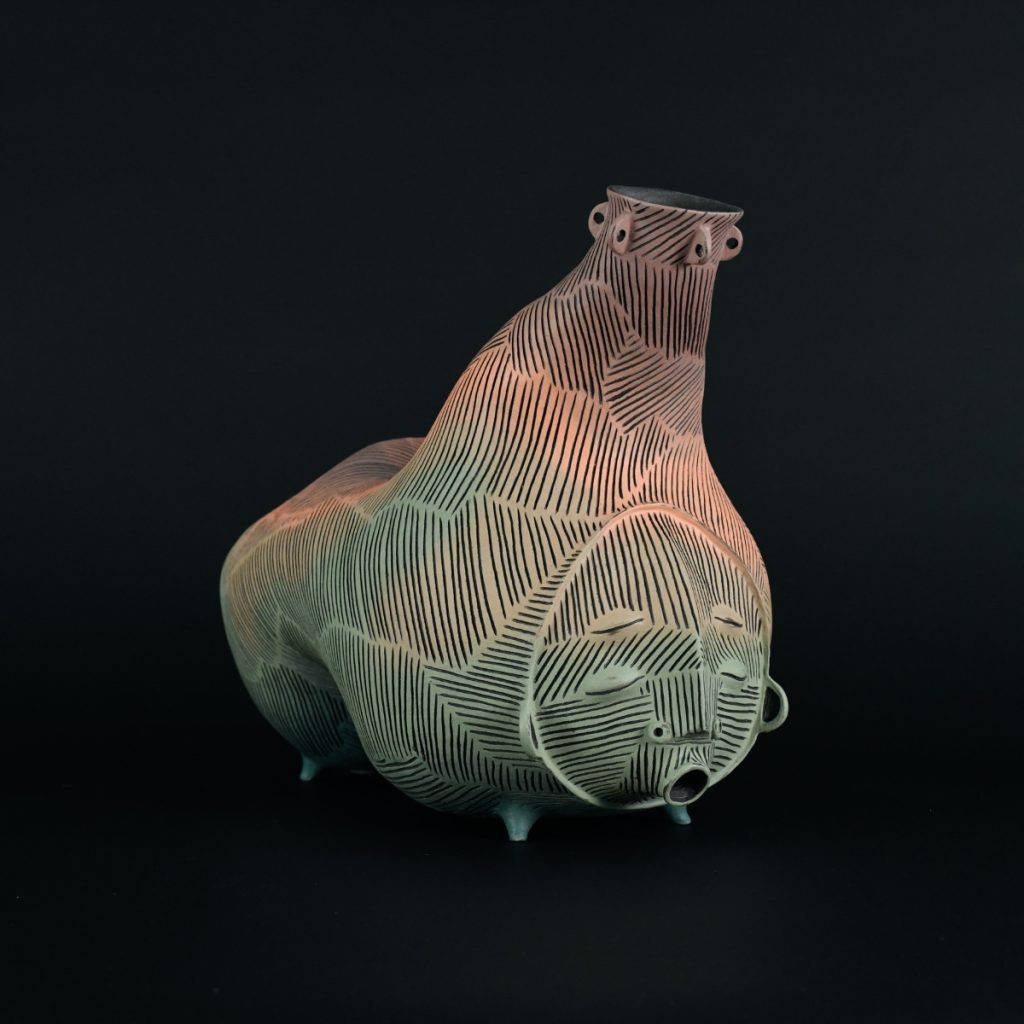
Faces, heads and masks from mythology and different cultures could be seen in a number of stalls. One appealing example was in a collection of lamps and vessels by Pascale Wilson, a Bristol-based maker who initially studied fine arts and then switched to ceramics only after discovering it as a hobby. ‘It’s such a responsive medium,’ she said, when I asked her why she switched, ‘it’s addictive to do.’ Her lamps were made of sandy-coloured bath stoneware in bulging, irregular, gourd-like forms, each adorned with simple line patterns and an inset disc sculpted as a sleeping face with closed eyes. Together, the faces explored different states that Wilson had experienced while dreaming. To that extent, she said, they are ‘personal’, but at the same time ‘communicate the whimsy and the movement and the fluidity of the dream world’.
Alongside the lamps was a second series of faces that used sgraffito to explore the expressions and colours associated with different emotional states. Both series are inspired by Asian and African art and the idea of ‘character-based narrative’, as well as ‘playfulness’. At the same time, the two series complement other by involving converse techniques. To make the patterns on the dream heads, Wilson coated the vessel in wax and then carved through the surface, before inlaying the colour with a slip inlay. In contrast, to make the emotion heads, she used a base of fine black stoneware, which she covered with a slip inlay first before carving back to reveal the clay underneath.
The sheer variety and range of techniques and themes explored in Ceramic Art London made it a fascinating event overall. At a time when the arts in general, and applied arts in particular, are experiencing cuts and other challenges in many countries, it is encouraging to see so much talent thriving among both established and emerging makers.
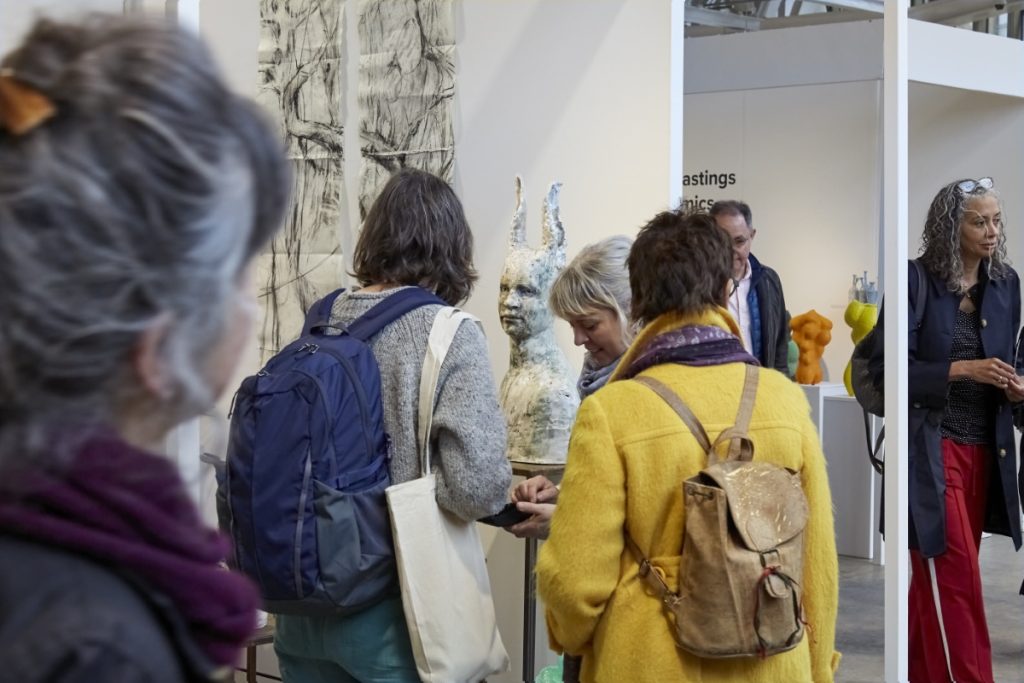
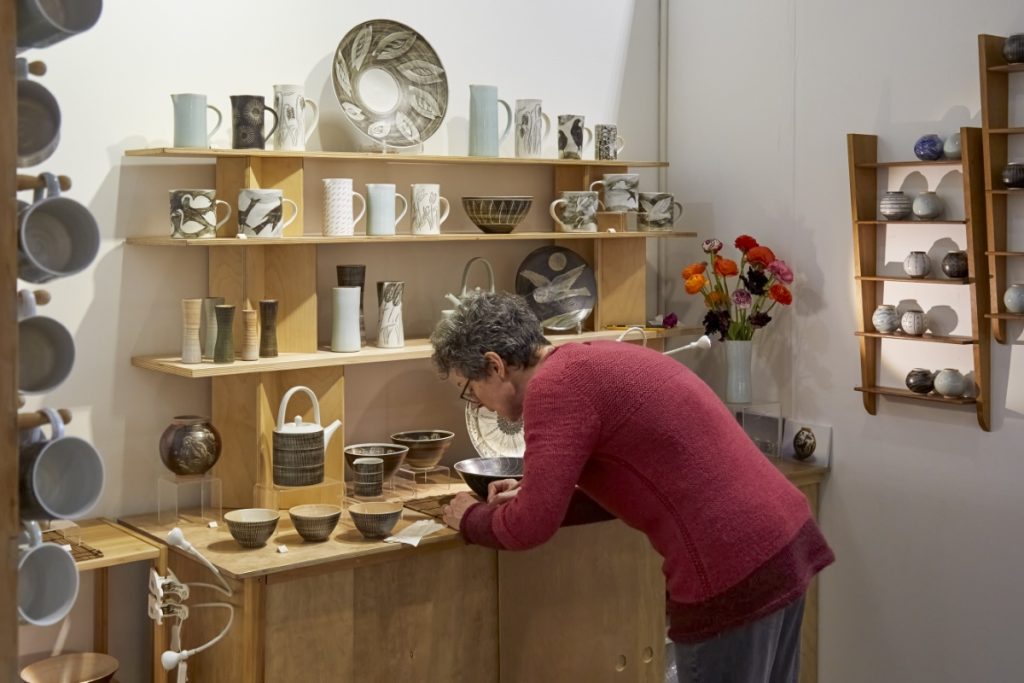
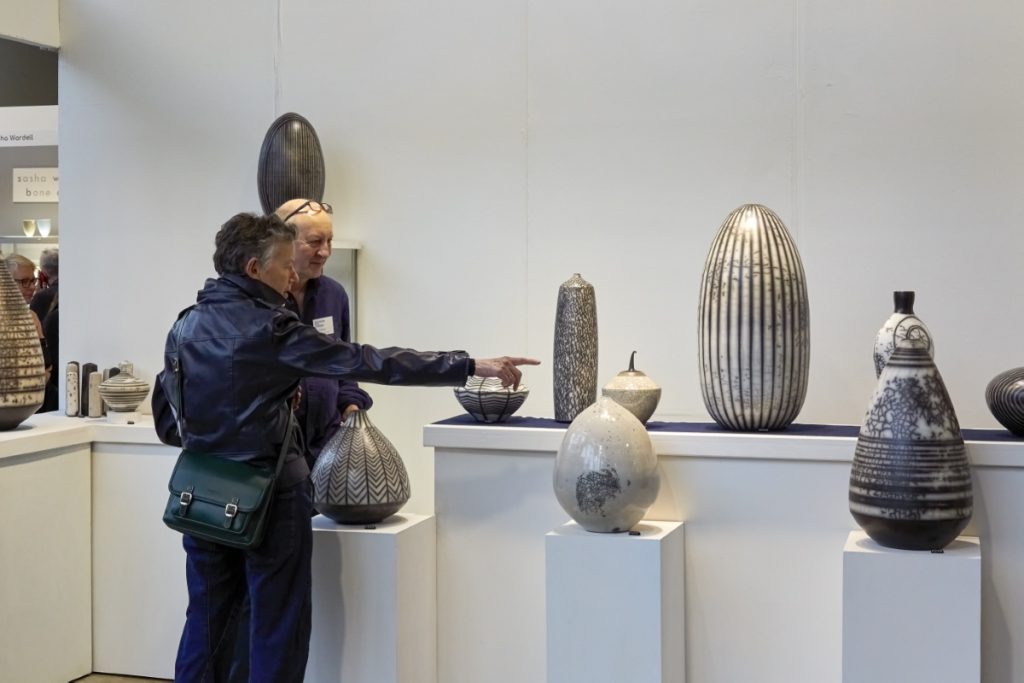
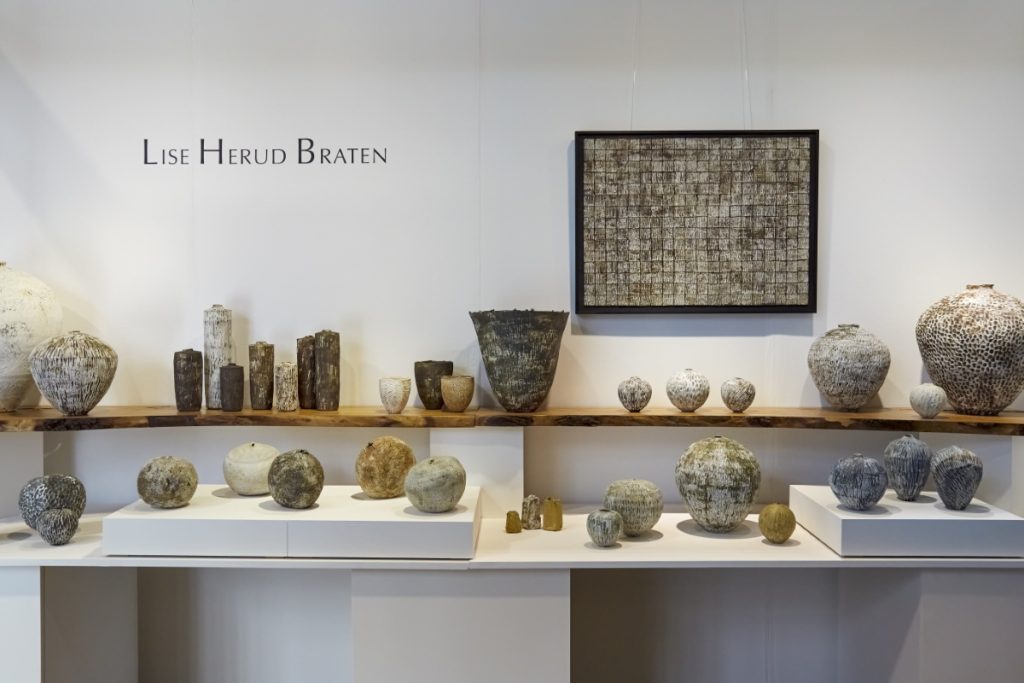
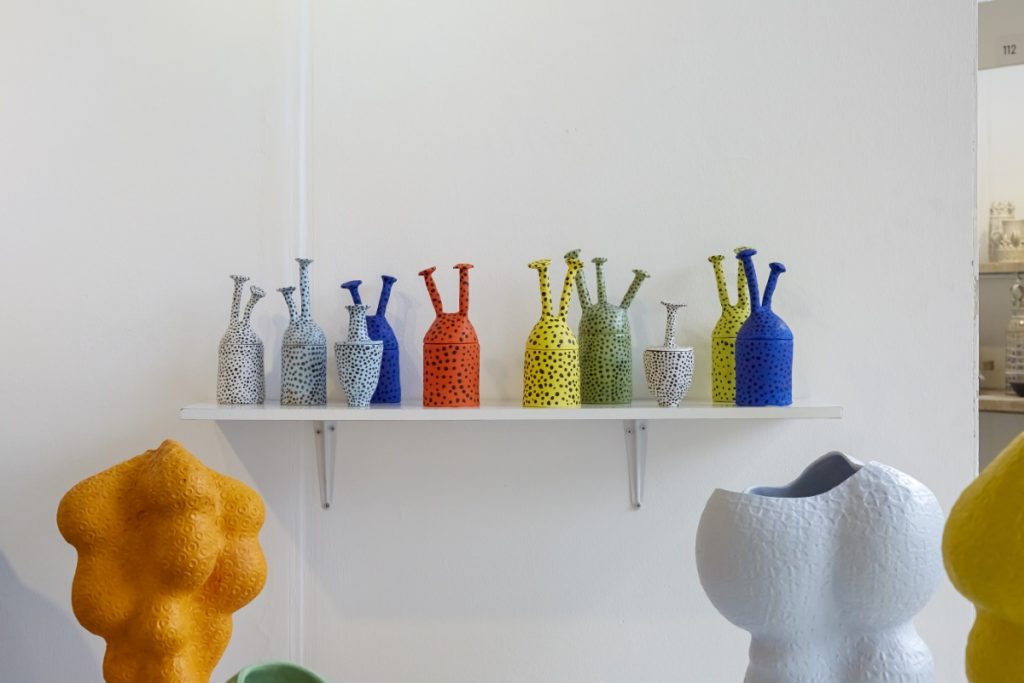
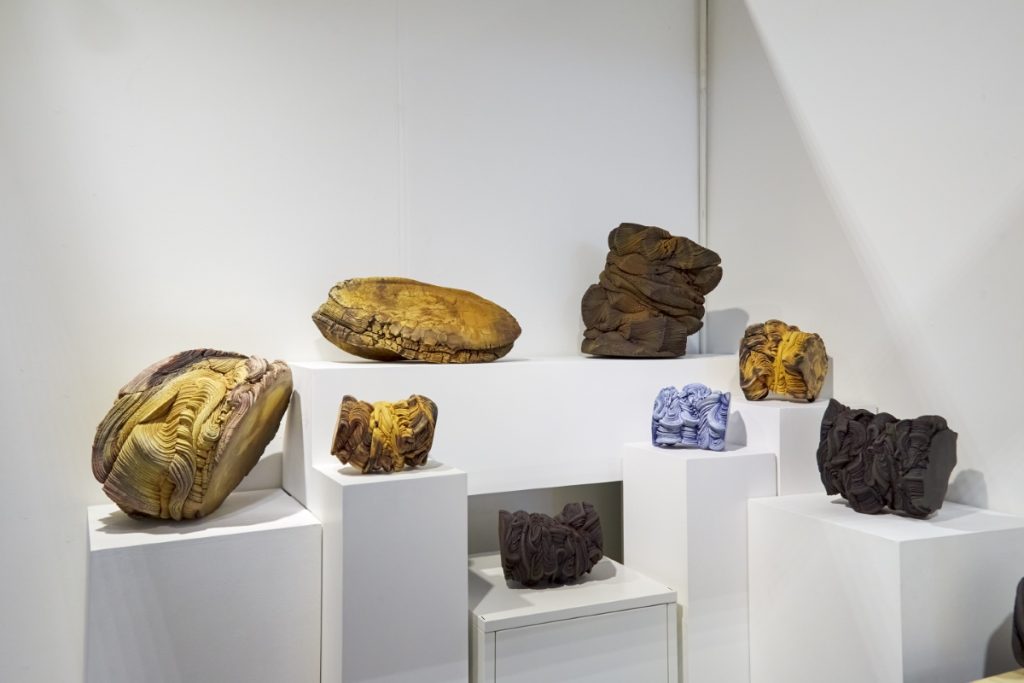
Emma Park is a freelance arts writer and contributing editor at Glass Quarterly.
Ceramic Art London 2024 took place between April 19-21 at Kensington Olympia West, London. The fair is organized by The Craft Potters Association of Great Britain (CPA).
This article has been made possible by member contributions to our Writers Fund. Become a member of Ceramics Now to support a wider range of voices and perspectives in the ceramics community.


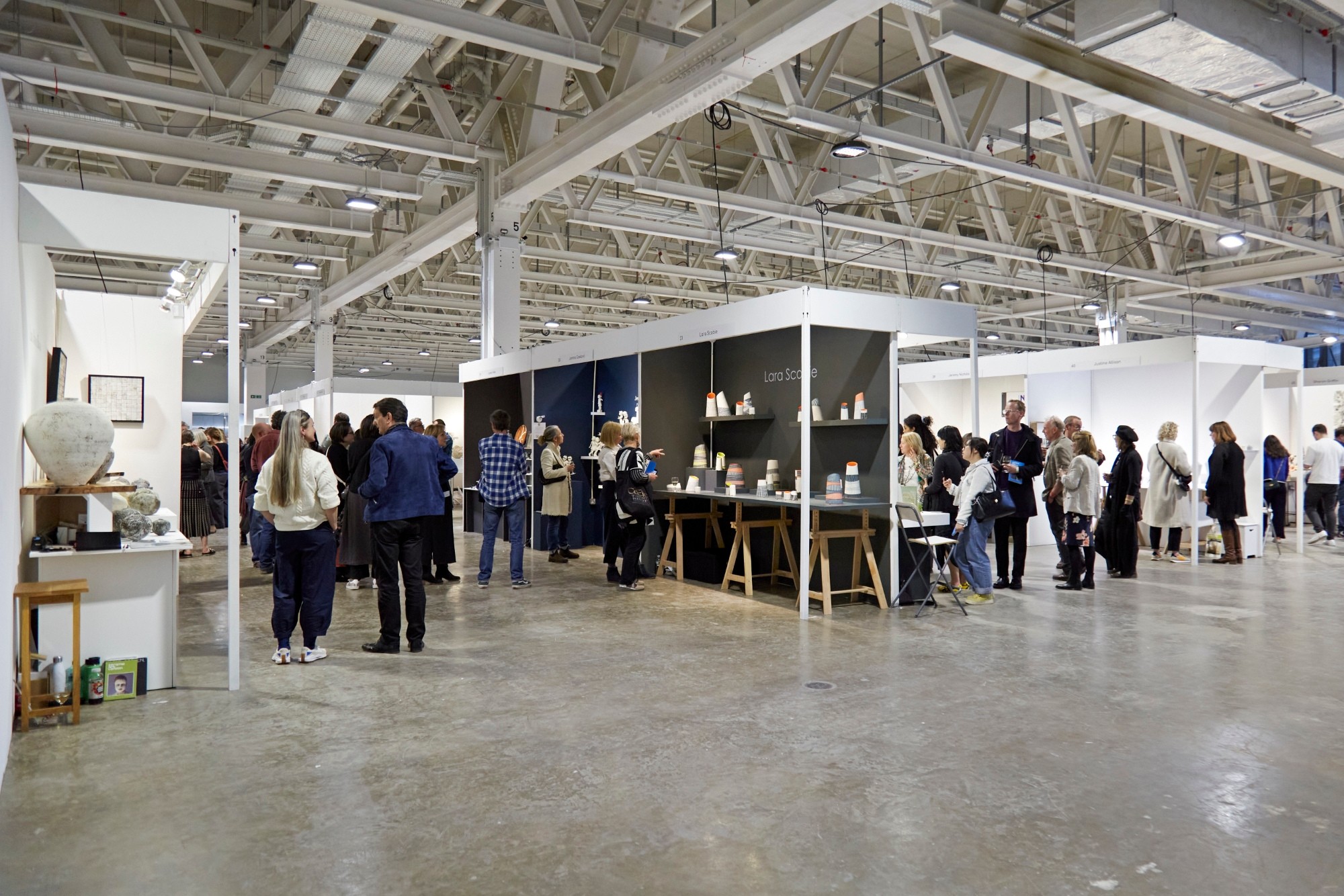














Comments 2